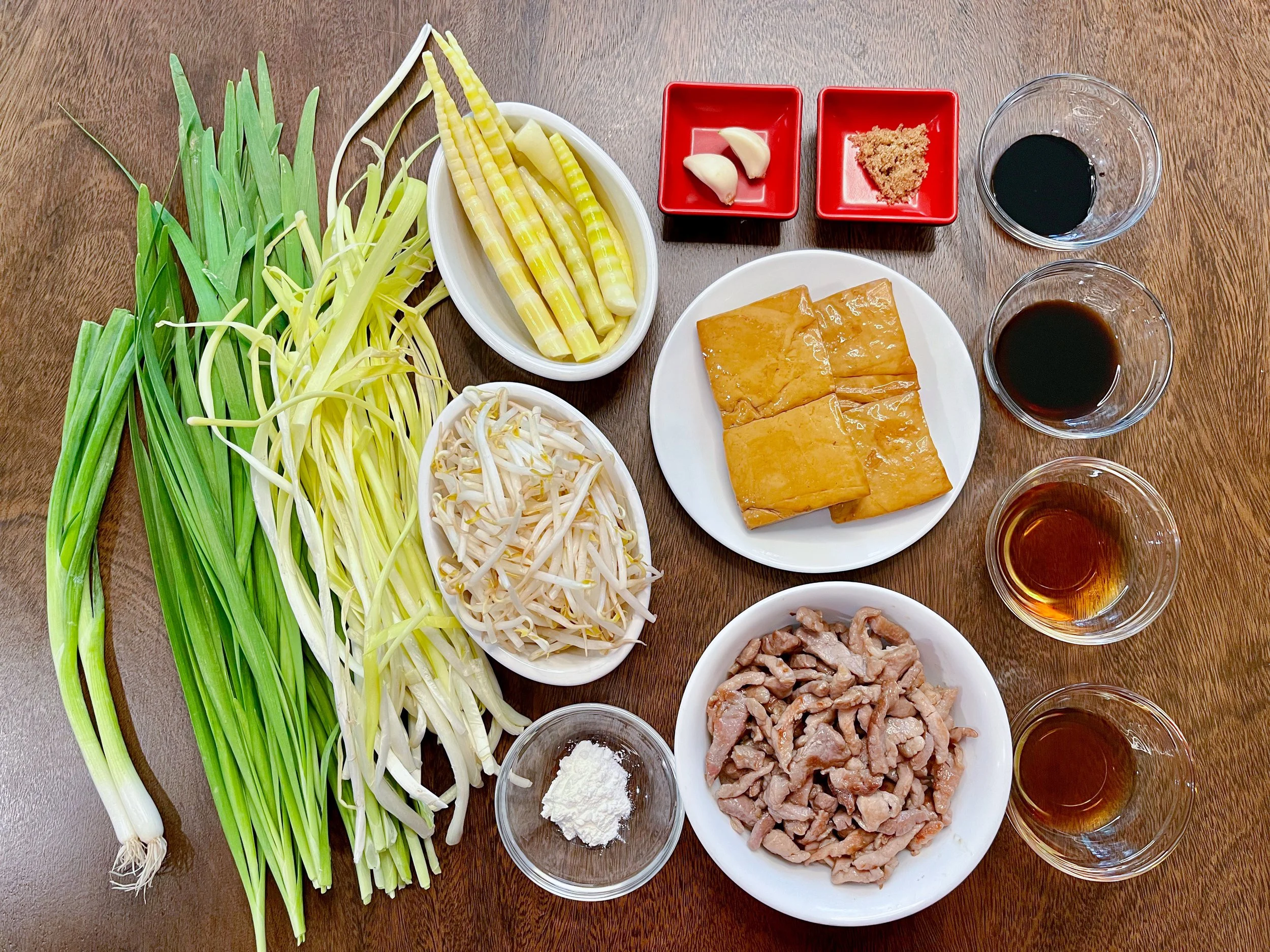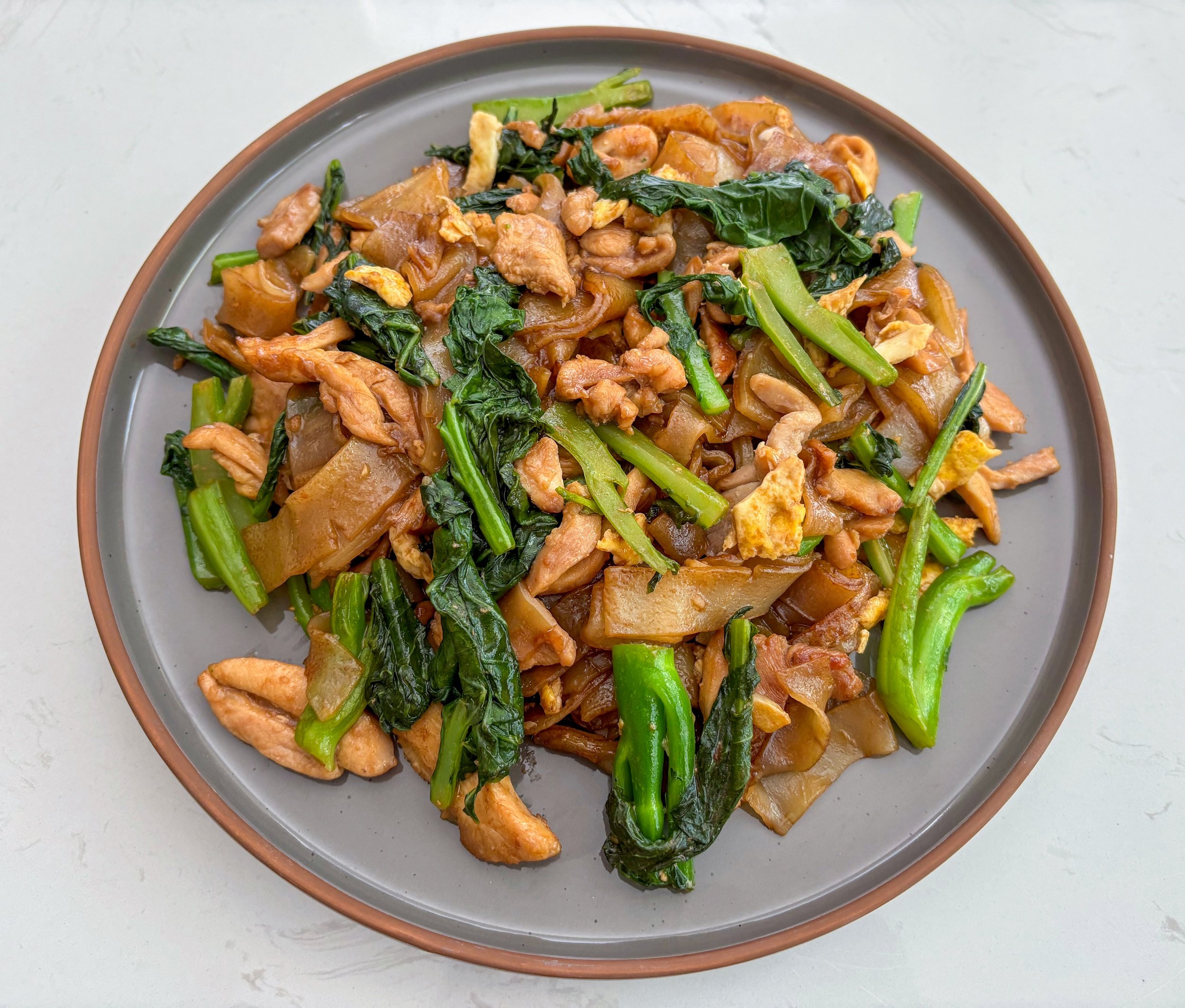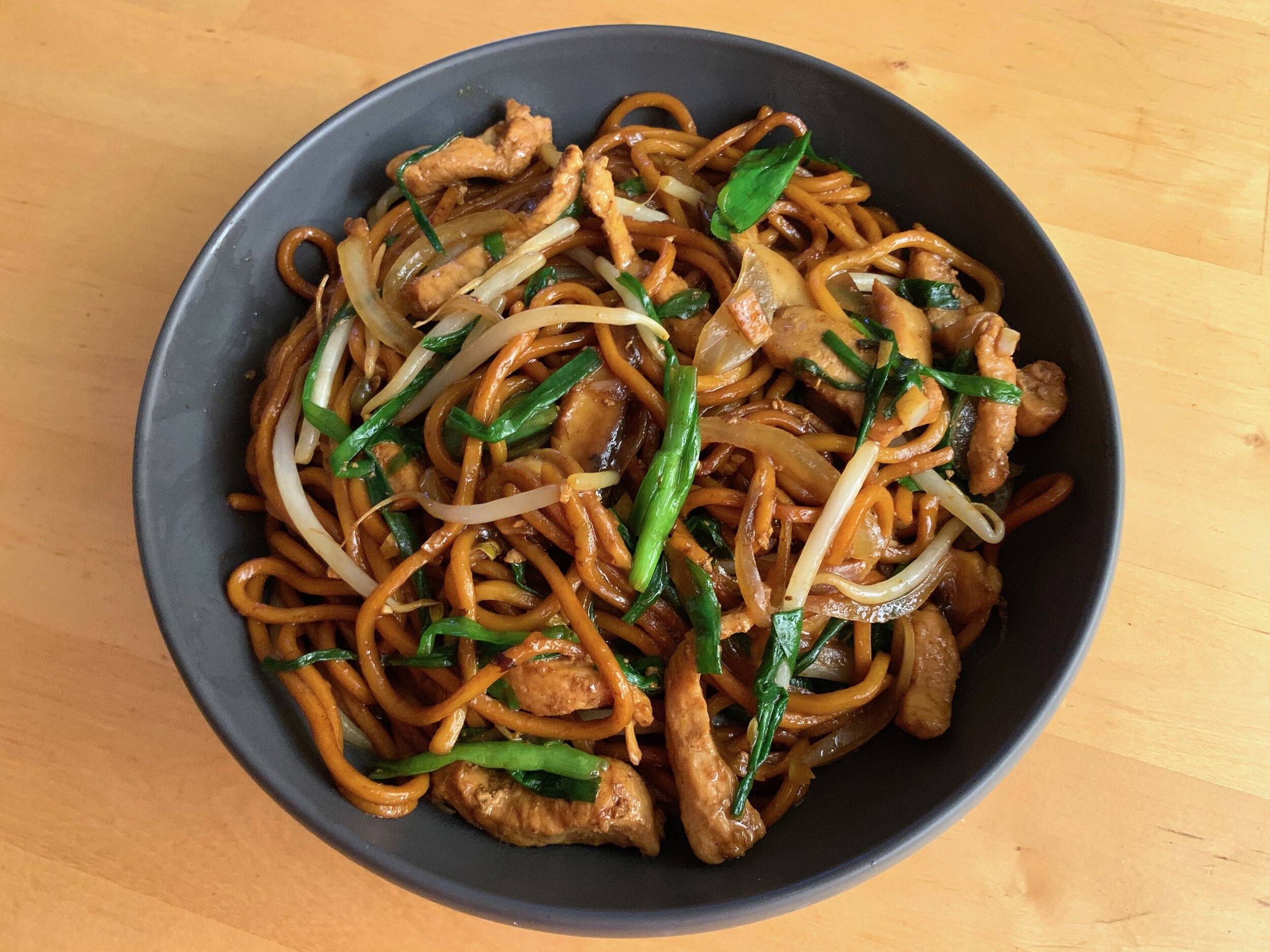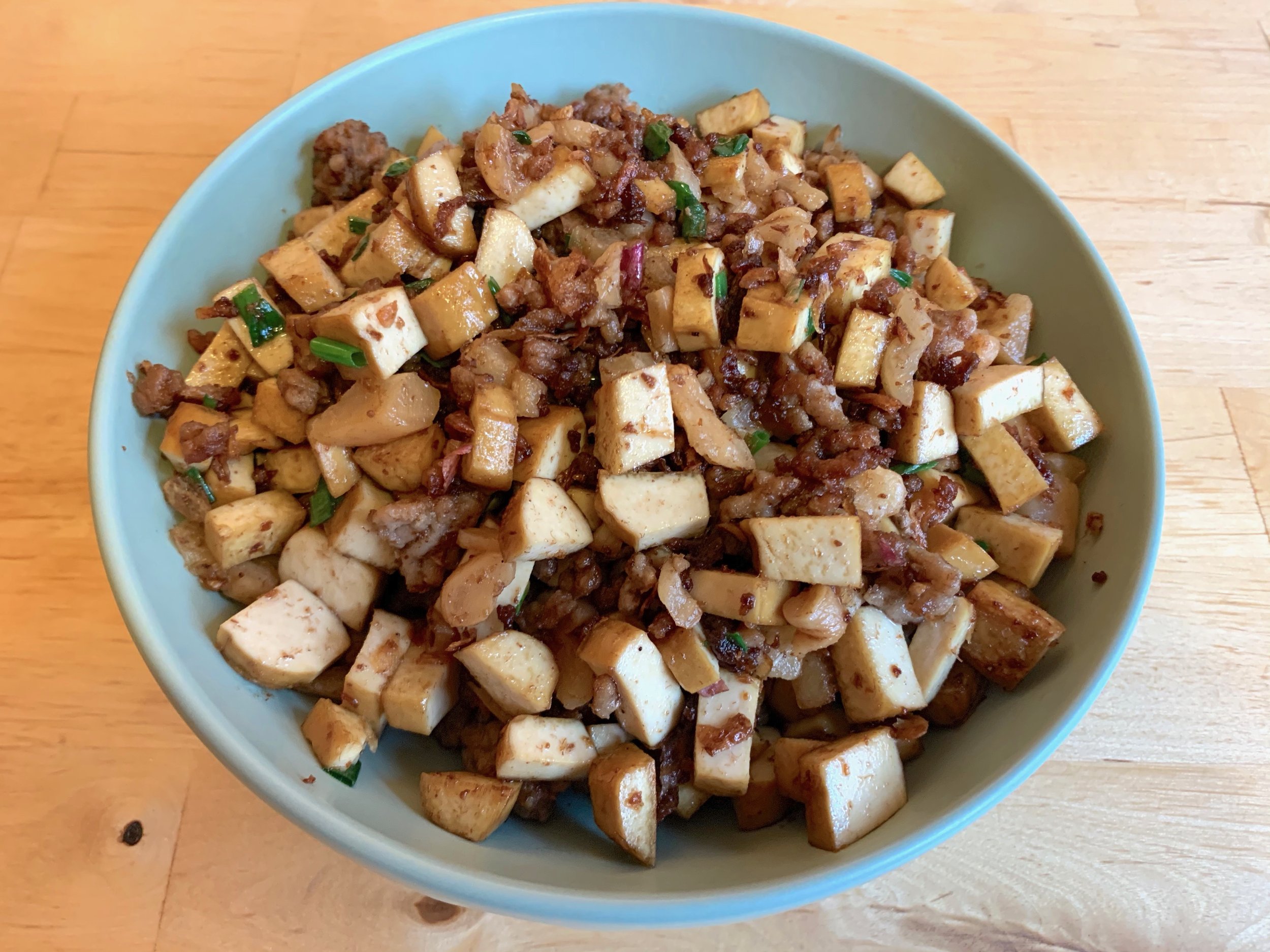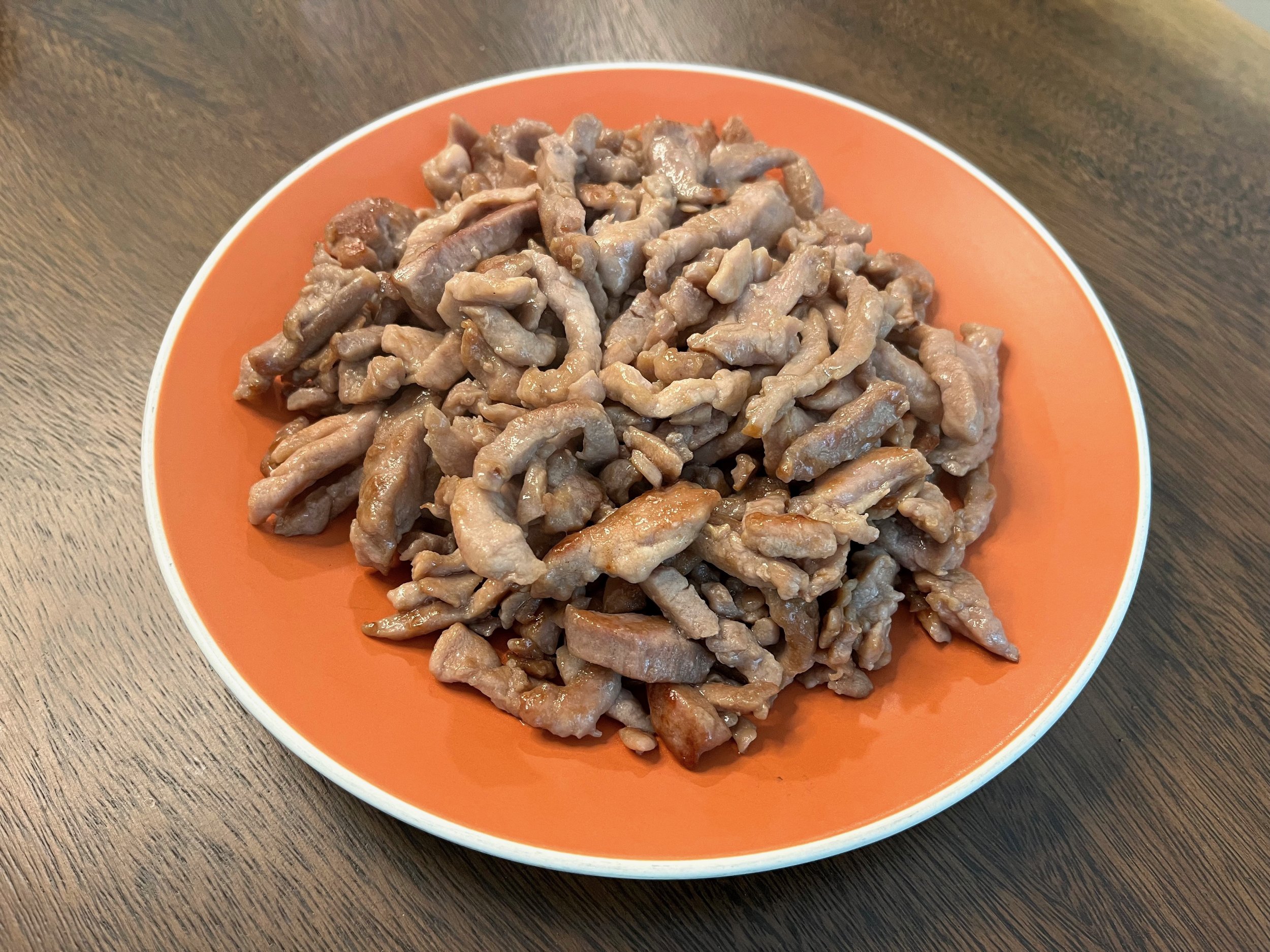Pork and Bean Curd Stir-Fry
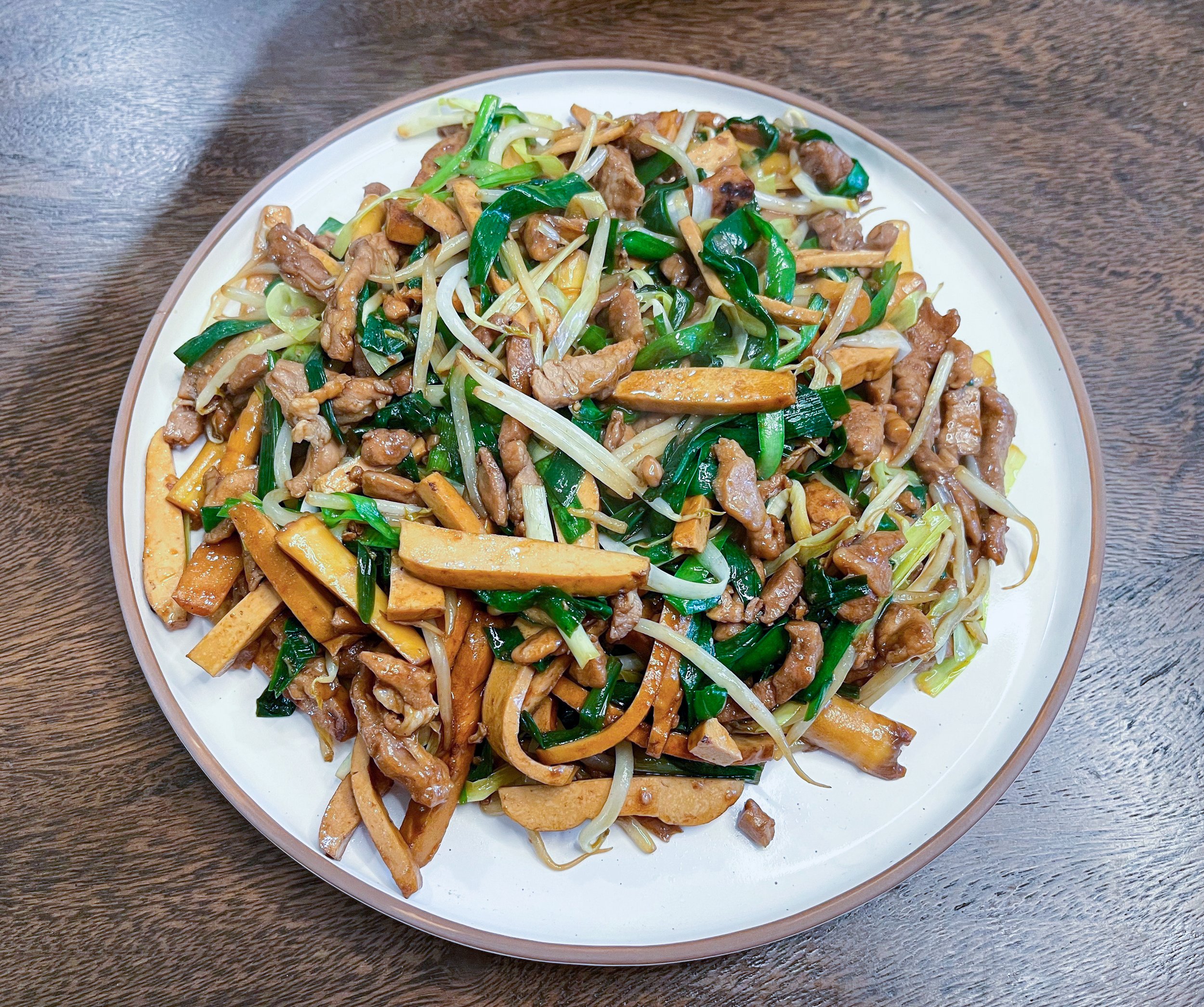
香乾肉絲 (Xiang Gan Rou Si)
Bean curd (香乾 (xiang gan) or 豆乾 (dou gan)) is an extra-firm style of tofu which is commonly used in Chinese and Taiwanese cooking [1]. It is often smoked or otherwise flavored with soy sauce and spices before being packaged and sold. Because its texture allows it to be tossed without falling apart, bean curd is often a critical component of stir-fry dishes, where it is used to either complement or replace meat. This homestyle Taiwanese stir-fry combines bean curd with pork, garlic chives, yellow chives [2], and tender bamboo shoots. This recipe uses prepared marinated pork slivers: you can find that recipe here!
Ingredients
8 oz cooked marinated pork slivers
8 oz bean curd, julienned
3 oz garlic chives
3 oz yellow chives
3 oz mung bean sprouts
4 oz fresh or poached bamboo shoots (optional)
2 scallions
2 cloves garlic, minced
1 tbsp soy sauce
1 tsp dark soy sauce
1 tbsp oyster sauce
1 tsp sugar
1 tbsp rice wine
1 tsp sesame oil
1 tsp cornstarch
Salt to taste
Vegetable oil
As with many stir-fries, this dish moves quickly and has a large number of ingredients. Preparing the ingredients in advance ensures that things go smoothly once the wok is on the heat. This recipe uses marinated pork slivers, which we often batch cook and store in the freezer. If you don’t have any on hand, start with pork loin or tenderloin and follow the recipe here. It should take about 30 minutes. If you are using pork slivers from the freezer, remember to thaw them in advance of the stir-fry.
With your pork ready, let’s tackle the bean curd. Cut it into ¼ inch by ¼ inch matchsticks, a similar size to the pork pieces, and set aside. Mince the garlic and chop the scallions and bamboo shoots into 1 inch lengths. This dish works best with young bamboo shoots (fresh or poached) which are still thin and tender. Larger or canned bamboo shoots are too tough for this stir fry. If any of your bamboo shoots are thicker than ½ an inch, cut them in half lengthwise before chopping into 1 inch pieces. Next, wash and chop the garlic chives and yellow chives into 1 inch pieces, discarding the tough stem ends. Chive leaves will often stick to each other in the pan, forming clumps of vegetation. To avoid this, toss the chive pieces in 2 teaspoons of vegetable oil.
Now we’re ready to cook! Heat 1 tablespoon of vegetable oil in a wok or skillet over high heat. If you don’t have a wok or skillet large enough to comfortably hold all of the ingredients, cook this stir-fry in two batches. If the pan gets too crowded, the water released by the vegetables and tofu will not boil off quickly, and the stir-fry will end up very wet.
When your wok is hot, add the bean curd, minced garlic, and scallion whites and stir-fry for about 3 minutes, tossing constantly so the garlic does not burn. Add the bamboo shoots, sugar, soy sauce, and rice wine to the wok, and stir-fry for 2 more minutes.
Then it’s time to add the last batch of ingredients to the wok—the cooked pork slivers, chives, bean sprouts, scallion greens, oyster sauce, and dark soy sauce. Toss well and continue cooking for 2 more minutes.
The stir-fry should be on the drier side, with less than a cup of liquid in the bottom of the wok. We’ll thicken this liquid with a cornstarch slurry to create a flavorful sauce. Mix 1 tsp of cornstarch with 2 tbsp cold water in a small bowl, then drizzle this slurry into the wok. Stir quickly to distribute the slurry and thicken the sauce. Finish the dish with sesame oil and salt to taste, then serve!
Substitutions
To make this dish vegetarian, omit the pork slivers, increase the amount of bean curd, and substitute the oyster sauce for a vegetarian oyster-flavored sauce. If you can’t find yellow chives, substitute them for more garlic chives. If you’d like to make the stir-fry spicy, as is sometimes done, add some dried or fresh chilies to the dish, or use a spoon of chili sauce! This dish works best with either fresh or poached young, thin, bamboo shoots. Older and larger shoots are too tough for stir-frying.
[1] Bean curd and firm tofu are not substitutes for each other! Bean curd has a different texture from firm tofu, and has a far lower water content.
[2] Yellow chives, or jiu huang (韭黄), are Chinese garlic chives which have been grown in the absence of light (similar to how white asparagus is grown). They have a milder flavor and more tender texture when compared to garlic chives.
Recipe
Prep Time: 15 min Cook Time: 10 min Total Time: 25 min
(+30 min if pork is not prepared)
Difficulty: 2/5
Heat Sources: 1 burner
Equipment: skillet or wok
Servings: 6
Ingredients
8 oz cooked marinated pork slivers
8 oz bean curd, julienned
3 oz garlic chives
3 oz yellow chives
3 oz mung bean sprouts
4 oz fresh or poached bamboo shoots (optional)
2 scallions
2 cloves garlic, minced
1 tbsp soy sauce
1 tsp dark soy sauce
1 tbsp oyster sauce
1 tsp sugar
1 tbsp rice wine
1 tsp sesame oil
1 tsp cornstarch
Salt to taste
Vegetable oil
Instructions
1. Cut the bean curd into ¼ inch by ¼ inch slivers. Chop the scallions and bamboo shoots into 1 inch pieces. Set these ingredients aside for the stir-fry.
2. Chop the garlic chives and yellow chives into 1 inch pieces, discarding any tough ends. Toss them in 2 tsp vegetable oil to keep them from sticking to each other when cooked.
3. Heat about 1 tbsp vegetable oil in a wok or skillet over high heat. When the wok is hot, add the bean curd, minced garlic, and scallion whites. If your wok or skillet cannot fit all the ingredients, work in two batches. Stir-fry for 3 minutes, tossing constantly.
4. Add the bamboo, rice wine, sugar, and soy sauce to the wok and stir-fry for 2 more minutes.
5. Add the cooked pork slivers, chives, bamboo shoots, scallion greens, oyster sauce, and dark soy sauce. Toss and continue cooking for 2 more minutes.
6. Make a cornstarch slurry by mixing 1 tsp cornstarch and 2 tbsp cold water. Add the slurry to the wok and stir well to thicken the sauce.
7. Finish the dish with sesame oil, remove from the heat, and salt to taste before serving.
